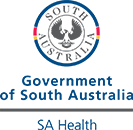Muscular dystrophy
Key facts
- Muscular dystrophy is the name of a group of genetic (inherited) diseases that weaken your muscles over time.
- There are different types of muscular dystrophy — Duchenne muscular dystrophy is the most common type.
- Symptoms often start in childhood and may include muscle weakness and difficulty walking.
- Diagnosis involves genetic tests, muscle biopsies and imaging tests like MRIs.
- Treatment may include a combination of physiotherapy and medicines.
What is muscular dystrophy?
Muscular dystrophy is a group of genetic (inherited) disorders that cause muscles to get weak and waste over time. This affects your ability to move.
There is no cure for muscular dystrophy. Medicines and physical therapy can help manage your symptoms and slow down how quickly it gets worse.
What are the types of muscular dystrophy?
There are different types of muscular dystrophy, including the following:
- Duchenne muscular dystrophy (DMD) is the most common type of muscular dystrophy. It usually affects males with symptoms starting between ages 2 to 4 years. Females can carry the gene and pass it on to their male children.
- Becker muscular dystrophy is similar to DMD but more mild and progresses more slowly. Symptoms usually start later in life.
- Myotonic muscular dystrophy is the most common type in adults. It affects both males and females. In this type, you can't relax your muscles after using them. You may notice muscle stiffness before weakness.
- Facioscapulohumeral muscular dystrophy usually affects the face and shoulders first. It can start in infancy, late childhood or early adulthood. It affects both females and males.
- Limb girdle muscular dystrophy usually affects the hip and shoulder muscles first. There may also be breathing problems. Symptoms may begin in childhood or early adulthood. It affects both males and females.
Other types of the disease include Emery-Dreifuss, oculopharyngeal, distal and congenital muscular dystrophy.
What are the symptoms of muscular dystrophy?
The symptoms of muscular dystrophy can vary depending on the type. Because the condition affects muscle strength and movement, symptoms include weak muscles that gradually gets worse over time.
Common symptoms include:
- muscle weakness, including in the legs and arms
- falling and difficulty getting up
- difficulty walking, running or climbing stairs
- delays in learning to walk in early childhood
- muscle pain or stiffness
- trouble swallowing or speaking
- breathing and heart problems (in later stages)
CHECK YOUR SYMPTOMS — Use the Symptom Checker and find out if you need to seek medical help.
What causes muscular dystrophy?
Muscular dystrophy is a genetic disorder — this means that you inherit the condition from one or more of your parents. It happens because mutations (changes) in certain genes affect the proteins that keep muscles healthy. Over time, this leads to a gradual loss of muscle and weakening of the muscles.
There are different types of muscular dystrophy, each with its own genetic cause.
When should I see my doctor?
See your doctor if you think you or your child may have muscular dystrophy. If you have already been diagnosed, make sure to see your doctor if you notice new symptoms. Regular doctor visits are important to check your health and adjust treatments.
Some medicines have side effects. It's important that your doctor manages your treatment to avoid complications. Be sure to tell your doctor if you notice side effects. Do not stop taking your medicines or change your dose without first checking with your doctor.
How is muscular dystrophy diagnosed?
Muscular dystrophy is diagnosed with a physical exam and various tests. These tests may include:
- genetic tests
- blood tests
- electromyography (EMG) to measure muscle activity
- muscle biopsy
- imaging tests, such as an MRI scan
- heart tests
- lung function tests
FIND A HEALTH SERVICE — The Service Finder can help you find doctors, pharmacies, hospitals and other health services.
How is muscular dystrophy treated?
There is no cure for muscular dystrophy. Treatment depends on the type of muscular dystrophy and focusses on maintaining mobility and managing symptoms.
Treatment may include:
- physiotherapy and occupational therapy — to keep your muscles strong and flexible
- medicines — such as corticosteroids to slow the progress of muscle weakness
- breathing support — if muscles for breathing are affected
- heart care — to manage any heart-related problems
- surgery — to correct issues like scoliosis
A team of specialists will help manage your treatment plan. They may include:
- neurologists — specialists in muscle and nervous system disorders
- physiotherapists — to help maintain strength and movement
- genetic counsellors — to provide advice on inherited conditions
- your GP — for general health management
ASK YOUR DOCTOR — Preparing for an appointment? Use the Question Builder for general tips on what to ask your GP or specialist.
Living with muscular dystrophy
Living with muscular dystrophy means managing symptoms and staying mobile through treatments. You will need regular check-ups for heart and lung health.
Taking care of yourself is important. You may need to consider changes to your daily life, such as:
- using leg braces, walkers or wheelchairs
- changes to your home or workplace, such as ramps, rails or hoists
- using communication and breathing aids
- adjusting daily activities and regular exercise
- eating a healthy diet
Emotional and psychological support is important to help cope with the challenges and manage stress. Speak with your doctor if you'd like a referral to a psychologist or counsellor for support.
What are the complications of muscular dystrophy?
Muscular dystrophy can lead to complications that affect your heart, lungs and muscles. Common complications include:
- gradual muscle weakness often leads to difficulty walking or loss of mobility
- weakness in the breathing muscles may lead to difficulty breathing
- difficulty swallowing may lead to malnutrition or pneumonia
- the heart muscle can weaken, leading to heart failure or arrhythmias
- a curved spine (scoliosis) may be caused by weak muscles
Can muscular dystrophy be prevented?
Muscular dystrophy cannot be prevented because it is a genetic condition you inherit from your parents. Genetic counselling can help you understand the risks of passing it on to your children.
Early diagnosis and treatment can help manage symptoms and slow down how fast it progresses.
Resources and support
Information and support are available for individuals and families affected by muscular dystrophy.
For more information visit one of these organisations:
- Muscular Dystrophy Australia has detailed information about muscular dystrophy and related services.
- Save our Sons shares news and research on Duchenne muscular dystrophy.
- Cerebral Palsy Guide explains the difference between cerebral palsy and muscular dystrophy.
To find a support group visit Muscular Dystrophy Australia.
To find support for your child, visit Children and Young People With Disability Australia.
You can also call the healthdirect helpline on 1800 022 222 (known as NURSE-ON-CALL in Victoria). A registered nurse is available 24 hours a day, 7 days a week.
Learn more here about the development and quality assurance of healthdirect content.
Last reviewed: October 2024

















